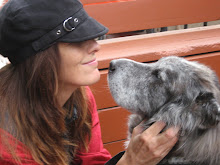












Corinth. The Temple of Apollo. Greece has many temples dedicated to the god of the sun--like Delphi and Epidarus. But the temple here is the oldest in Greece and the only ancient Greek temple in Corinth. It's quiet. The sun warms my back as we venture through time.
A little history...Built earlier than most--around 560 BC, it had a tile roof, 38 Doric/limestone columns--of which 7 are still standing. This important location--the Isthmus of Corinth--a narrow strip separating Peloponnese and N. Greece thrived till the 8th century. Conquered by Phillip II in 338, who was then assassinated, Corinth soon came under the leadership of Alexander the Great--who led the Greeks against the Persians. It was partially destroyed by the Romans in 146 BC, and then rebuilt in 44 BC under Ceasar the Great--Roman Corinth emerged.
This magnificent epicenter held 800,000 citizens by the time Paul the Baptist arrived--who made two visits in the 50s AD. It was a place of business and pleasure, mainly populated by Jews and freedmen. In 67 AD, Nero wielded his golden shovel, and began constructing the Corinth Canal (but it was not finished until 1893! Talk about procrastination.) Corinth began its decline in the 300s AD, and then it was destroyed in 396 and all its inhabitants sold into slavery. When Constantinople fell , the geographic treasure of Corinth became a sought after prize. Captured by the Turks in 1458, the Knights of Malta in 1612, The Venetians in 1687-1715, back to the Turks, and then the Greek people finally laid claim to their lost city in 1822. It became the new center of commerce between N. & S. Greece--the main shipping route between the Ionian and Aegean Seas.
Now, walking through this ancient site, I'm once again struck by the layers. A sacred site: from prehistoric times, to Ancient Greek, Roman, and then Christian. Tied together by columns. Structures. Gardens. Fountains. Language. There is evidence here in Corinth that the Greek and Roman alphabet overlapped. A very unusual thing. (The Greek alphabet was adapted from the Phoenicians in 7th C BC.) What is it that connected these distinct cultures together? Was it merely stones constructed into meaning? Or an invisible spiritual bond emanating from the Earth? Centuries upon centuries of sacredness.
Most of the visible ruins are Roman--but much has been topple by Mother Nature. Statues of John the Baptist. A sacred spring and Peirene's Fountain--major sources of water for Corinth. Peirene has a beautiful story. She was a woman who wept so hard after losing her son, that she dissolved into the spring forever. There are possible temples to Aphrodite and Octavia--but the evidence not as obvious as the sun god's sanctuary here.
It's no surprise the air itself feels pure. Corinth is 85% mountains. Pine (its sap soon to be the STRONG, white wine called Retsina,) Cypress (known for connecting heaven and earth,) poplar, and eucalyptus. A castle far on the overlooking mountain. A fortress of protection. A point where 3 continents meet-- a variety of flora--olive and grapes. Wine. Vineyard. Homer said that "whoever doesn't know how to make wine is a barbarian." I can see that here. So beautiful. So green.
And then there are the dogs. The big-nosed, daschound/dobie (and who knows what else!) mix. She's just had babies (somewhere) and she is so so skinny. My heart breaks for her. I scratch behind her ears as she lays behind a rock in the heat. She moans. Out of joy or pain--I'm not sure. I fall in love with another dog too--a shepherd mix. He lays on my leg, melts into me as I rub his soft belly. I want to take him home.
Layers run deep. Longing. Sadness. Joy. Perseverance. It's all here, wrapped up in columns and mosaics and clear, sweet and beautiful air.


2 comments:
I don't know what's more impressive and stunning--your photos or your writing! Beautiful!
Thank you Cathy! Just wait till I get to Istanbul--thanks to you :)
Post a Comment